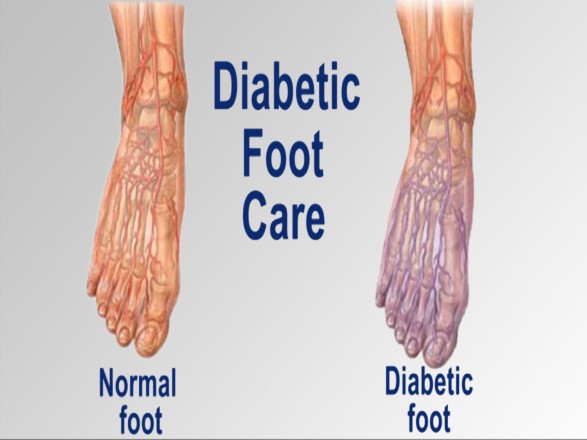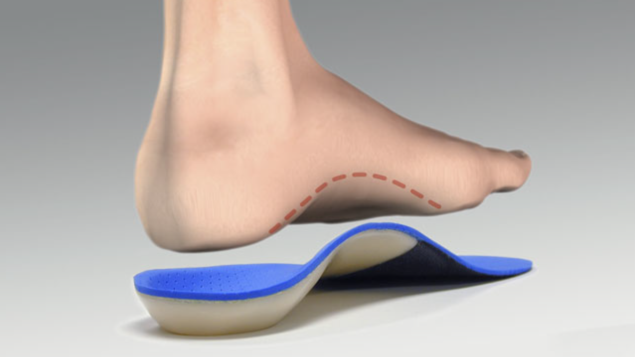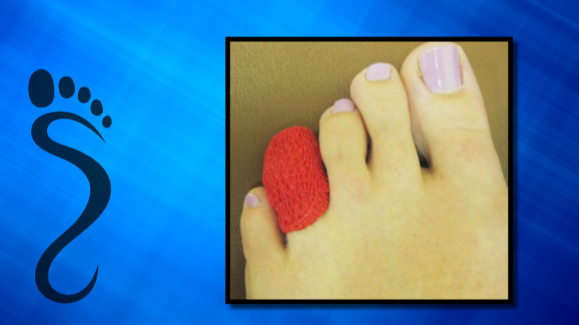Blog
Researchers Hoping to Save Limbs with Sensor-Equipped “Smart Socks”
 Researchers at the University of Arizona have been working on a device that monitors feet with sensors and fiber optics in order to predict areas likely to develop ulcers. Called “Smart Socks,” this technology was created to reduce the devastatingly high number of amputations that often result from diabetic neuropathy.
Researchers at the University of Arizona have been working on a device that monitors feet with sensors and fiber optics in order to predict areas likely to develop ulcers. Called “Smart Socks,” this technology was created to reduce the devastatingly high number of amputations that often result from diabetic neuropathy.
Neuropathy is a nerve disorder caused by diabetes that produces a loss of sensation in the extremities. Without feeling in the feet, ulcers can go unnoticed and become infected. If the infection is also left unattended the damage can necessitate amputation. This happens more frequently than many realize. There are 26 million Americans currently living with diabetes, and according to the CDC someone loses a limb because of diabetic complications every twenty seconds. Fortunately, researchers seem to be close to solving this problem and expect that this technology will be available by 2019.
When dealing with systemic disease of the feet, is extremely important to check the affected areas routinely so that any additional problems are caught quickly. For professional help, see podiatrists Dr. Michael E. Newman and Dr. Denise Kohler of Pennsylvania. Our doctors will ensure that your feet receive the care that they need.
Systemic Diseases of the Feet
Systemic diseases affect the whole body, and symptoms usually are displayed in the feet. This condition can make a patient’s ability to walk unbearable. Systemic diseases include gout, diabetes mellitus, neurological disorders, and arthritis.
Gout – is caused by an excess of uric acid in the body. Common symptoms include pain, inflammation, and redness at the metatarsal/phalangeal joint of the base big toe. Gout can be treated by NSAIDs to relieve pain and inflammation, and other drugs that lower the acid levels in the body.
Diabetes mellitus – is an increase in the level of blood sugar that the body cannot counteract with its own insulin. Failure to produce enough insulin is a factor in Diabetes.
Diabetes of the Feet
Diabetic Neuropathy – may lead to damaged nerves and affect the feet through numbness and loss of sensation.
Peripheral Vascular Disease – can restrict the blood flow to the feet, and often times lead to amputation of the feet.
If you have any questions feel free to contact one of our offices, located in Plymouth Meeting and Ambler, PA. We offer the latest in diagnostic and treatment technology to meet your needs.
Read more about Systemic Diseases of the Feet
Backwards Feet Don’t Prevent Waitress From Going Forward in Life
 Wang Fang is an everyday woman, kept on her feet all day due to her profession as a waitress. Fang walks and works normally, all despite being born with backwards feet. Because of her condition, physicians were initially concerned that Fang have a hard time walking.
Wang Fang is an everyday woman, kept on her feet all day due to her profession as a waitress. Fang walks and works normally, all despite being born with backwards feet. Because of her condition, physicians were initially concerned that Fang have a hard time walking.
However, Fang is perfectly functional, and does not see her backwards feet as a disadvantage. “I can run faster than most of my friends and have a regular job as a waitress in the family restaurant. There is no reason to class me as disabled,” Fang said. “I can walk as well as anyone else and even run faster than them. I’m like everyone else—except of course that I put my shoes on backwards.”
There are several different effects that come with constantly working on your feet. If you are finding difficulty working on your feet, see podiatrist Dr. Michael Newman of Pennsylvania. Dr. Newman will treat your foot and ankle needs.
Working on Your Feet
Standing on your feet for long periods of time can cause stress and pain in your feet. Your whole body may experience change in terms of posture, back pain, bunions, callouses and or plantar warts. There are ways to avoid these conditions with proper foot care, smart choices and correct posture.
Positive Changes
Negative heeled shoe – choosing this shoe places the heel slightly lower than the ball of the foot. These are great for overall foot health. Find shoes that fit you correctly.
Go barefoot – our feet were not designed to be enclosed for hours, or all day. Try allowing yourself to expose your feet to air.
Eliminate Pain
Foot Exercises – performing simple exercises, incorporating yoga and stretches is beneficial. This will allow increased blood flow to the area and muscles of the foot.
Achilles tendon – stretching the foot out flat on the floor, will relax the calf muscles and tendon. These exercises can be performed almost anywhere.
Foot stretches and proper footwear will help with pain and prevent further issues.
If you have any questions, please feel free to contact one of our offices located in Plymouth Meeting and Ambler, PA. We offer the newest diagnostic and treatment technologies for all your foot care needs.
Read more about Working on Your Feet
Women’s High Heels increase risk for Morton’s Neuroma
 High heels and other ill-fitting shoes could be a prime cause of Morton’s Neuroma. Neuroma affects the nerves located between the toes, creating a sensation similar to stabbing while walking. It is believed that neuroma stems from compression, injury or damage to the nerve. Therefore women who wear high heels or narrow-fitting shoes are at particular risk to developing the condition. The nerve repairs itself if left untreated, using fibrous tissues that create thickening and enlargement. The disorder is aggravated by irregularities that interfere with optimal foot function, such as high arches, overpronation, and hypermobility.
High heels and other ill-fitting shoes could be a prime cause of Morton’s Neuroma. Neuroma affects the nerves located between the toes, creating a sensation similar to stabbing while walking. It is believed that neuroma stems from compression, injury or damage to the nerve. Therefore women who wear high heels or narrow-fitting shoes are at particular risk to developing the condition. The nerve repairs itself if left untreated, using fibrous tissues that create thickening and enlargement. The disorder is aggravated by irregularities that interfere with optimal foot function, such as high arches, overpronation, and hypermobility.
The disorder can be avoided by wearing shoes that are wide and deep in the toe area and that do not apply pressure to the metatarsals, or bones in the balls of your feet. Metatarsal support pads can also help by removing pressure from the nerve and promoting your foot’s natural anatomical position.
Morton’s neuroma can be a difficult condition to contend with. If you are experiencing symptoms of Morton’s Neuroma, speak to podiatrists Dr. Michael Newman and Dr. Denise Kohler of Pennsylvania. Our doctors will diagnose and treat your feet accordingly.
Morton’s Neuroma
Morton's neuroma is a painful foot condition that commonly affects the areas between the third and fourth toe and the ball of the foot, although other areas of the foot are also susceptible to this condition. Morton’s neuroma is caused by an inflamed nerve in the foot that is being squeezed and aggravated by surrounding bones. Women are more likely than men to have an occurrence of this foot condition.
What Increases the Chances of having Morton’s Neuroma?
-Ill-fitting high heels or shoes that add pressure to the toe or foot area.
-Jogging, running and any sports that involve constant impact to the foot area.
-Flat feet, bunions, and any other foot deformity may put you at a higher risk for developing Morton’s neuroma.
If you suspect that you may have this condition, you should visit your podiatrist. A podiatrist will first conduct a thorough physical examination to check for palpable masses between the bones of the foot.
If you have any questions, please feel free to contact one of our offices located in Plymouth Meeting and Ambler, PA. We offer the newest diagnostic and treatment technologies for all your foot and ankle needs.
Read more on Morton’s Neuroma
University of Nottingham Study Finds Ingrown Toenails Associated with Over Grooming
 A recent study conducted at the University of Nottingham found that trimming nails too often may actually lead to certain nail problems including ingrown toenails. After examining how the nails stick to the nail bed and grow forward, researchers found that cutting the nails daily puts a certain force on the nail that can make nails grow too slow or too fast as well as causing additional problems.
A recent study conducted at the University of Nottingham found that trimming nails too often may actually lead to certain nail problems including ingrown toenails. After examining how the nails stick to the nail bed and grow forward, researchers found that cutting the nails daily puts a certain force on the nail that can make nails grow too slow or too fast as well as causing additional problems.
Lead study author, Cynthia Rauch, also used the research to find ways to avoid ingrown nail problems. She states, “Looking at our results, we suggest that nail beauty fanatics who trim their nails on a daily basis opt for straight or parabolic edges, as otherwise they may amplify the imbalance of stresses which could lead to a number of serious conditions.”
Ingrown toenails are terribly uncomfortable, and in the worst cases surgery might be required to get rid of them. If you think you have an ingrown toenail, consult with one of our podiatrists of Pennsylvania. Our doctors will confirm your diagnosis and do everything she can to treat your problem.
Ingrown Toenails Causes
Ingrown toenails occur when a toenail grows sideways into the bed of the nail, causing pain, swelling, and possibly infection.
There are a number of risk factors for ingrown toenails. Some include cutting your nails too short, participating in strenuous sports, diabetes, obesity, and fungal infection. Some are genetically predisposed to ingrown nails, although wearing ill-fitting or damp shoes can exacerbate the problem.
Treatment
There are a number of steps you can take to treat ingrown nails:
-Let your toenails grow out
-Soak the toes in hot water with antibiotic soap or Epsom salts
-Placing a piece of cotton under the affected nail may allow the toe to grow up instead of into the nail bed
-Rest with your feet up
If however, your pain is severe, or you see red streaks running up your leg, you should see a podiatrist. Your podiatrist may make a small incision and remove part of the toe nail to relieve the pressure. A local anesthetic may be used to lessen the discomfort of the operation. Topical medication may also be prescribed to prevent the regrowth of the problem nail.
If you have any questions, feel free to contact one of our offices located in Plymouth Meeting and Ambler, PA. We offer the latest in diagnostic and treatment technologies to meet all your needs.
Read more about Ingrown Toenails
